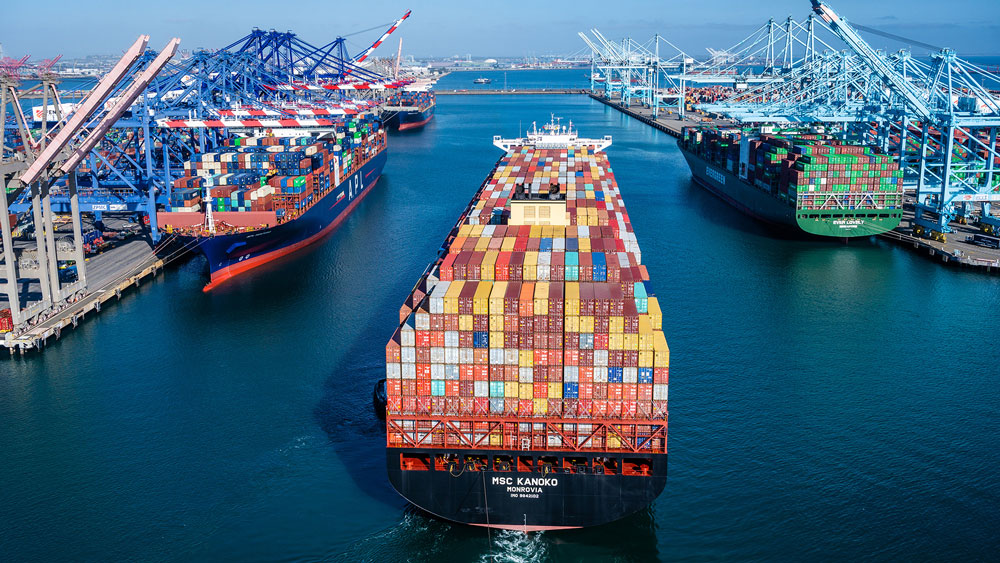
Don Barton’s family has weathered plenty of challenges since it began growing walnuts in California in 1912. But the threats facing California agriculture today may the toughest yet.
Barton grew up on the family ranch in Escalon, about mid-way between Sacramento and Merced. He graduated from Stanford University and later earned an MBA in agribusiness at Santa Clara University. Rather than return to the family business, he pursued a food marketing career, working for major companies like Ocean Spray Cranberries, Inc. and The H.J. Heinz Corporation.
In 2003, he left the East Coast to take on a new responsibility: launching the family’s GoldRiver Orchards, Inc. Today, as its president and managing partner, Barton oversees a company that processes some 30 million pounds of walnuts a year at its plant near Escalon. It works with about 100 walnut growers and employs 60 employees at peak season. The company markets its California walnut products to Asia, Europe and the Middle East, all under its GoldRiver Orchards brand. Meanwhile, Barton Ranch continues to grow walnuts as well as almonds and olives for oil.
Barton’s industry knowledge broadened during his 2017-21 tenure as chairman of the board of Western Agricultural Processors Association (WAPA). He’s also served on committees for the California Walnut Board.
Those experiences have left Barton acutely aware of the difficulties of running a California agricultural company. But what haunts him is a statement CalMatters columnist Dan Walters made at WAPA’s annual meeting last June. In an early November interview with West Coast Nut magazine, Barton recalled what Walters told the audience that day: “In Sacramento, if you are not at the table, you are on the menu. And agriculture, I have news for you, you are on the menu.”
Q: How are the drought and the Sustainable Groundwater Management Act affecting your operation?
The water situation is the most critical situation we face on the farming side of our business. The main impact is not due to SGMA. The main impact is the gross mismanagement of water resources in California by both the State of California and the federal government. Most of our production operations are near the Stanislaus River. The flows from the Stanislaus are regulated by the New Melones Dam upstream of our ranch.
Twice a year since 2009, the Army Corps of Engineers makes major releases of fresh water from the New Melones Reservoir down the Stanislaus River and eventually through the Delta and into the rising oceans. They do this ostensibly to increase the fish populations, yet the salmon population has not increased. We’ve flushed an estimated 800 billion gallons of water down the channel. That’s fresh water that is so precious to California, whether it’s for agriculture or municipal use, and it’s going right into the ocean with no measurable results. This same water could be delivered to farms in our area, reducing reliance on groundwater.

The environmental advocates ignore the fact that there are non-native predatory species in the Delta that are eating the salmon fry and having a major impact on salmon populations in the San Joaquin River system. They just don’t seem to care. Ultimately, this terrible policy is creating a situation where we have, in this case, a fantastic storage facility that is grossly underutilized because we keep draining water out of it, even in the midst of two of the most severe droughts California has ever experienced. That, far more than SGMA, is a major challenge for us. In my view, we have the surface water to use to keep our groundwater basins sustainable under SGMA, if only California and the federal government would stop preventing its beneficial use.
Q: Apart from water, what’s your biggest challenge today?
It is a continuous onslaught of adversarial actions from Sacramento, whether they’re from the State Legislature or from regulatory agencies that continue to press in on agriculture. Farmers typically want to keep our heads down. We just want to do our job and enjoy the way of life that we’re used to. We’re not good at organizing. That has hurt us. We are out-organized by the environmental interests in this state. I believe we are in an existential battle for our very survival. California agriculture is a breadbasket for the rest of the world, particularly with specialty crops. But you can easily foresee scenarios where that won’t be the case 20, 25, 30 years from now. We’ve got to fight to hold on to our way of life.
Q: What can you do about it?
One way we’re trying to address this, in a state where three-quarters of the State Legislature are Democrats, is to engage with moderate Democrats, particularly those from urban districts, who don’t know a lot about agriculture but are willing to learn. We bring them out to our farms and processing facilities to dispel some of the perceptions out there and show them that, first of all, we are employing a lot of people in California. Secondly, that we are good stewards of the land. And thirdly, that there is a viable place for farming and agriculture in California. We don’t have the glamour of Hollywood. We don’t have the power of Silicon Valley. But we are still a significant part of California industry, and we’re one of the largest exporters in California and the U.S. We’re worth fighting for, if we can convince enough politicians to fight for us.
Q: What are your priorities for 2022?
Our first priority is trying to figure out how to continue to serve our customers so that, ultimately, we can serve our growers. The mainstream media tend to focus on supply chain issues with regard to imports. But growers and processors are having a terrible time getting our product shipped to overseas markets. A recent report ranking the efficiency of ports around the world showed that of 351 ports worldwide, Los Angeles ranks #328 and Long Beach ranks #333. That’s embarrassing, and it has huge social costs for the American economy. These shipping challenges are huge. In our 18 years as a walnut processor, I can’t remember a challenge as significant as this supply chain issue we’re facing. We are shipping goods but only at a rate of about half of what we would normally be doing at this time of year. We’re building up a lot of inventory. We’ve got our warehouses packed full of finished goods. They’re under contract, ready to ship. But finding empty containers and getting those shipped on time is a huge challenge.
Q: In closing, is there anything else you’d like to say?
I’d just like to re-emphasize that the challenges that agriculture faces in California are real and they are severe. They will require leaders in California agriculture to come together. We’ve got to do a better job of organizing, speaking out, of making sure that our elected officials know the importance of California agriculture to the California economy. If the environmentalists have their way, honestly, you can foresee a future where the Central Valley of California, which is agriculture, if that disappears, you will have a Dust Bowl. It will be an economic disaster for the state, and the impact will ripple across worldwide markets, because California’s products are traded worldwide. At some point, we need the help of regular citizens and certainly, we need to be better organized as an industry to remind people of the value of California agriculture to our state economy.











